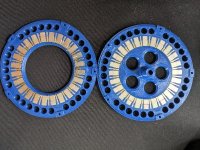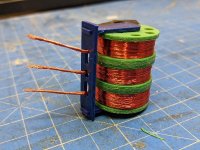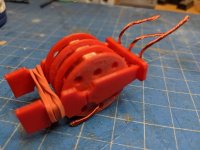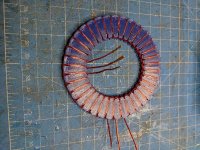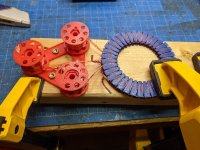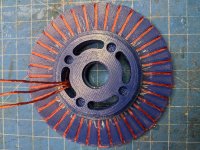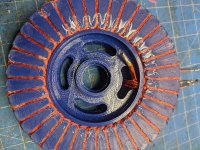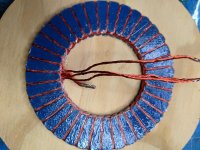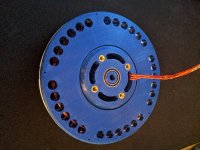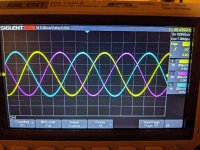It's been a busy week. I turned 30. woah. Family and friends visiting. Normal seems to be returning.
Couple updates on the motor though

The rotors I made, and started gluing magnets in, were too small for the halbach. So I modified the design. Come to find out, the nozzle on the printer was totally worn out. I re-printed with a new nozzle and it seems fine, even with the small design changes. I also went ahead an ordered some hardened steel nozzles to replace the brass ones I have been using up until now. Also I got the thrust bearing washers in the mail finally, so I decided to include those in the next version. I modified the design to have a slot for the washers. I'm worried they will not really add to the stiffness of things, but we shall see. I also made a little jig for putting in the non-halbach magnets without allowing the glue to spread to the halbach slots. this should help save the time I was spending removing the epoxy from the slots prior to putting the halbach magnets in. I will be printing second rotor tonight, and should have those glued up soon.
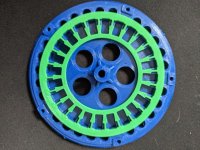
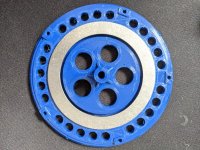
I also made a three layer spool for winding all three phases at once. I made it fit the K'nex and litz wire machine, and removed the gear that made the litz wire machine drum spin, and wound it up. It looked good, but without the twisted litz it has a tendency to get really messy. I am thinking of a sleeve of some kind to slide the three tier spool into to keep the wires in their respective channels. it would make dealing with it easier. Also when winding the stator. Its reallllly difficult to get it started with 60 loose strands of wire everywhere. However, once it was started it was actually quite easy to wind. but eventually I found that the three spools were not identical, and led to differences in length over time, and by the end of the first lap it became impossible to work with, the slack wire constantly twist themselves up.

Made a small tweak to the Hub too, which means that I have essentially needed to re-print every part again. So it goes!
So back to the drawing board for the spool thing or I need another way of working with the three phases at once.
I have really been spending a lot of time thinking about the cycloidal gear. that could really make this a viable thing. I am really interested in trying to make one, but I see it as an inefficient gear, or heavy if you deal with those inefficiencies. I would love to come up with a creative way to not need a bunch of bearings to make it run nicely. I still feel that it would be best applied to an in-runner, but it could be used with my form factor too. Too many ideas, not enough printers.





